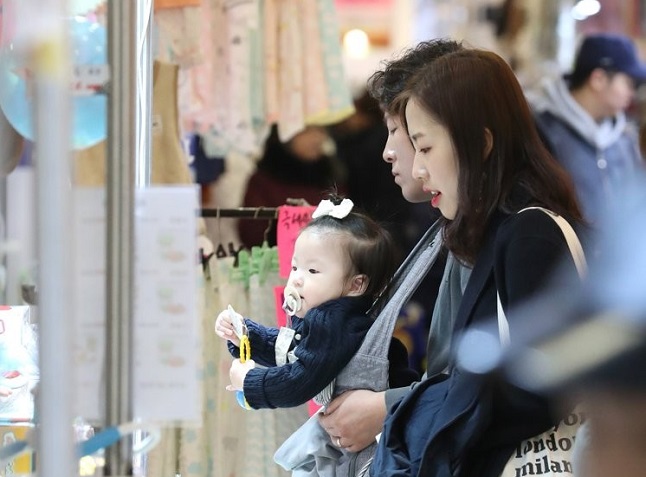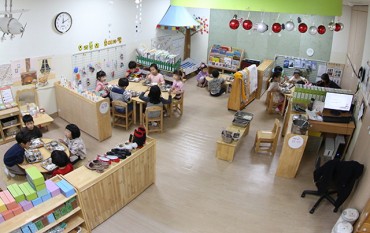
Visitors look at items on display during a baby fair in Sejong, central South Korea, on Dec. 27, 2019. (Yonhap)
SEOUL, March 2 (Korea Bizwire) — The gender imbalance of newborn children has leveled significantly compared to the past when giving birth to boys was an important aspect of South Korean culture.
According to the data from Statistics Korea, there were 104.7 newborn baby boys per 100 newborn baby girls last year, down by 0.4 from the previous year.
It is the lowest imbalance since 1990 when there were 116.5 newborn baby boys per 100 newborn baby girls.
The gender ratio, which stood at the 110-hurdle in the 1990s, dropped below that mark in the 2000s.
The gender ratio stood at around 108 baby boys per 100 baby girls in the early and mid-2000s, before it went down further to 106.2 in 2007.
Last year, the overall gender ratio, as well as the gender ratio sorted by the first, second, and third-born child, was within the normal range.
The gender ratio after a third-born child dropped by 1.1 from the previous year, hitting a new record low of 105.4.
Previously, South Koreans had high expectations for giving birth to a boy in order to “continue the family line.” The gender ratio after a third son, therefore, had been much higher for boys than among first-born babies.
In 1993, the gender ratio reached a high of 209.7 baby boys per 100 baby girls.
The gender ratio began to drop since then, going from 128.3 baby boys in 2005 and 110.9 in 2010 to 108 in 2013.
By 2014, the gender ratio came within the normal range of 106.7 boys. Last year, the ratio dropped further down to 105 boys per 100 girls.
H. M. Kang (hmkang@koreabizwire.com)






